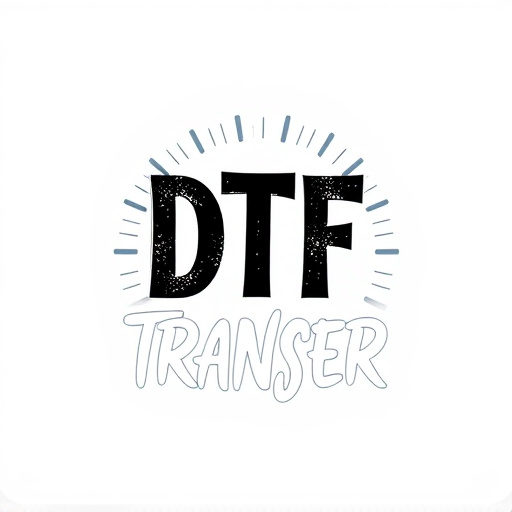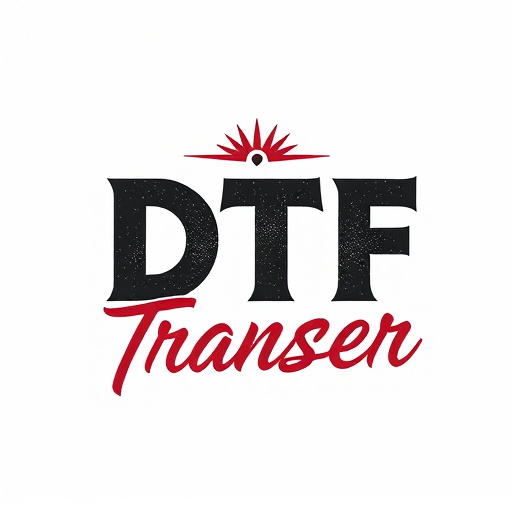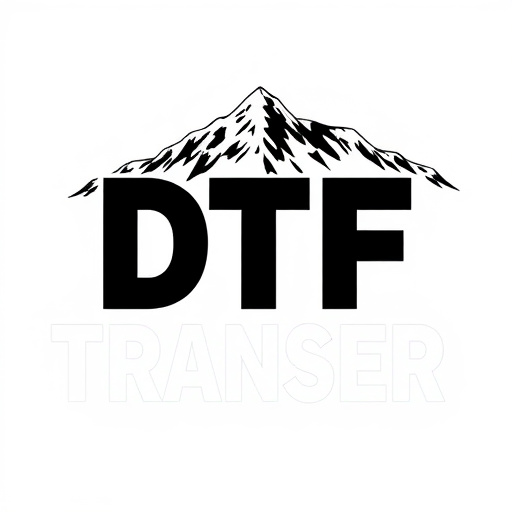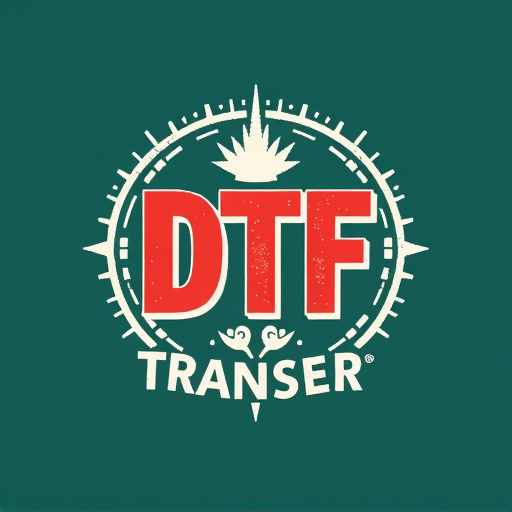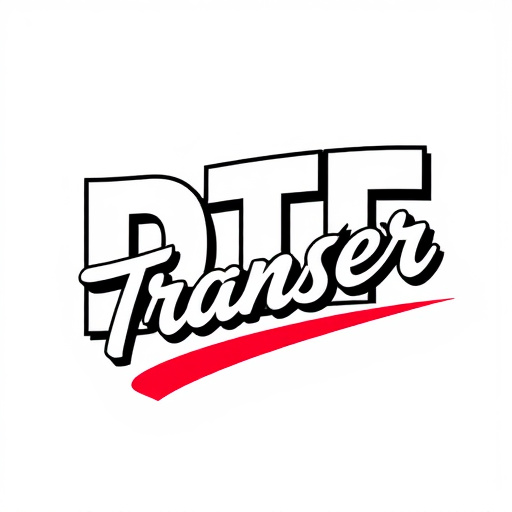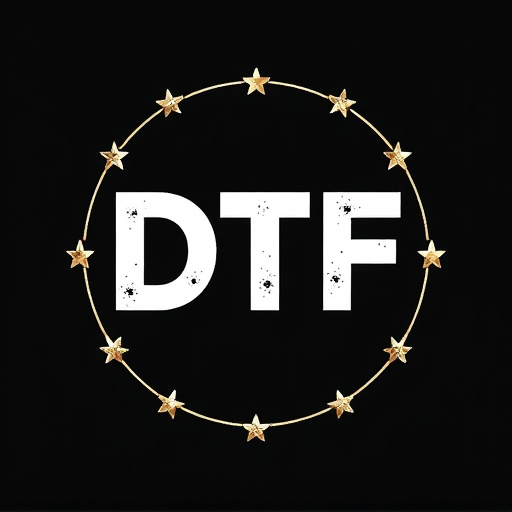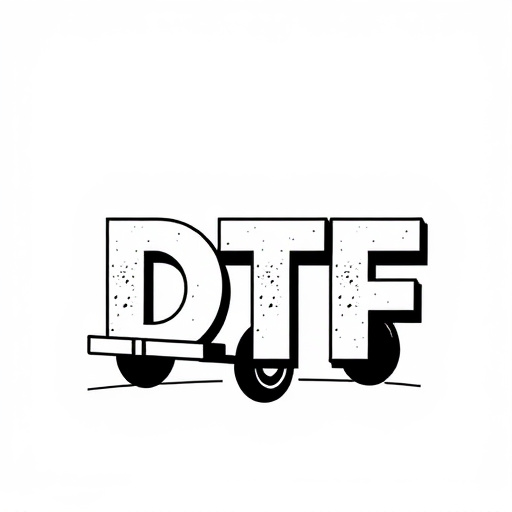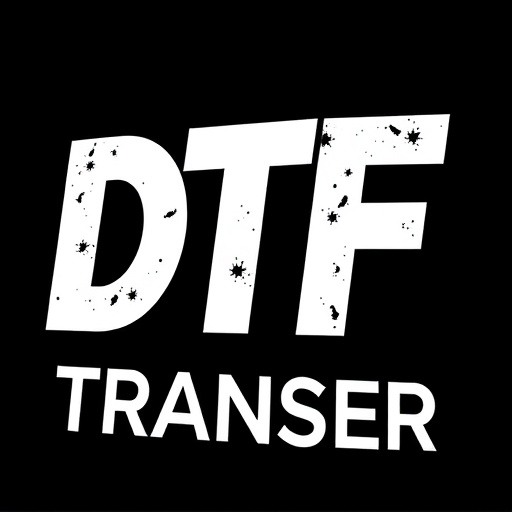Direct-to-Film (DTF) transfers are a cutting-edge method for applying designs directly onto fabrics with unparalleled precision and color vibrancy. This process uses specialized equipment and binding agents to transfer ink from a film or plate to the fabric surface, bypassing traditional printing methods. DTF transfers have revolutionized the textile industry, offering high-quality decoration on materials like cotton and polyester, suitable for apparel, accessories, and home décor. The key advantage lies in their ability to produce intricate designs with fine lines and vibrant colors while streamlining production and catering to on-demand customization. Specialized binding agents play a crucial role in ensuring long-lasting durability and visual quality, filling microscopic imperfections and creating a seamless bond between the image and fabric. Choosing the right binding agent based on fabric type, intended use, and aesthetic preferences is essential for achieving vibrant, durable DTF results.
Direct-to-film (DTF) transfers have revolutionized fabric printing, offering vibrant, durable designs. This article delves into the crucial binding agents that secure these transfers to fabrics, ensuring long-lasting results. We’ll explore the DTF process, the role of binding agents, different types available, and their advantages. Additionally, we’ll guide you through application techniques and help choose the perfect agent for your fabric projects, enhancing the final product’s quality and appeal.
- Understanding Direct-to-Film (DTF) Transfers: A Brief Overview
- The Role of Binding Agents in DTF Printing Process
- Types of Binding Agents for DTF Transfers
- Advantages of Using Specialized Binding Agents
- Application Techniques and Considerations
- Choosing the Right Binding Agent for Your Fabric Project
Understanding Direct-to-Film (DTF) Transfers: A Brief Overview

Direct-to-Film (DTF) transfers are a cutting-edge method for applying designs directly onto fabrics, offering unparalleled precision and vibrancy in color reproduction. This innovative process involves transferring ink from a film or plate directly onto the fabric’s surface using specialized equipment, bypassing traditional printing methods like screen printing or heat transfer. DTF Transfers have revolutionized the textile industry, enabling efficient, high-quality decoration on various materials, including cotton, polyester, and more.
This technology is particularly favored for its ability to produce intricate, detailed designs with fine lines and vibrant colors, making it suitable for a wide range of applications, from apparel and accessories to home décor items. By eliminating the need for intermediate rollers or plates, DTF printing streamlines production, reduces set-up times, and allows for on-demand customization, catering to the fast-paced demands of modern retail and promotional product industries.
The Role of Binding Agents in DTF Printing Process

The binding agent plays a pivotal role in the Direct-to-Film (DTF) printing process, ensuring the integrity and longevity of the final fabric product. Its primary function is to secure the film transfer onto the fabric, creating a robust bond that withstands wear and tear. This step is crucial, especially for high-quality prints intended for outdoor or industrial applications, where the image needs to be durable against elements like sunlight, rain, and friction.
In DTF printing, the binding agent acts as a glue, adhering the polyester film containing the design to the fabric surface. It’s chosen based on its compatibility with both the film and the fabric, ensuring optimal bonding strength. The agent forms a protective layer, filling in any microscopic imperfections on the fabric and creating a seamless fusion with the printed image. This not only enhances the visual appeal but also guarantees that colors remain vibrant over time.
Types of Binding Agents for DTF Transfers

Direct-to-film (DTF) transfers require specialized binding agents to ensure the durability and longevity of the printed image on fabric. The choice of binding agent plays a crucial role in determining the quality and vibrancy of the final product. There are several types of binding agents designed specifically for DTF applications, each with its unique properties and advantages.
Water-based binding agents are popular choices due to their eco-friendly nature and ease of application. They offer excellent opacity and coverage, ensuring that the print doesn’t show through from the fabric beneath. On the other hand, solvent-based binding agents provide a more durable finish, making them suitable for outdoor applications or items that will be subject to frequent handling. These agents can create a harder, more protective layer on the fabric, enhancing the overall durability of the DTF transfer.
Advantages of Using Specialized Binding Agents

Using specialized binding agents for Direct-to-Film (DTF) transfers on fabrics offers several significant advantages over traditional methods. Firstly, these advanced agents ensure superior adhesion, enabling vibrant and long-lasting color reproduction on various fabric types. This is particularly beneficial for creating high-quality prints on textiles, where the stability of the bond is crucial to prevent fading or peeling over time.
Moreover, specialized binding agents enhance the durability of DTF transfers. They create a robust link between the film and fabric, ensuring that designs withstand regular wear and tear. This advantage is particularly notable in industries like fashion and home decor, where fabrics are subjected to frequent handling and exposure to different environments, guaranteeing that printed images maintain their integrity for extended periods.
Application Techniques and Considerations
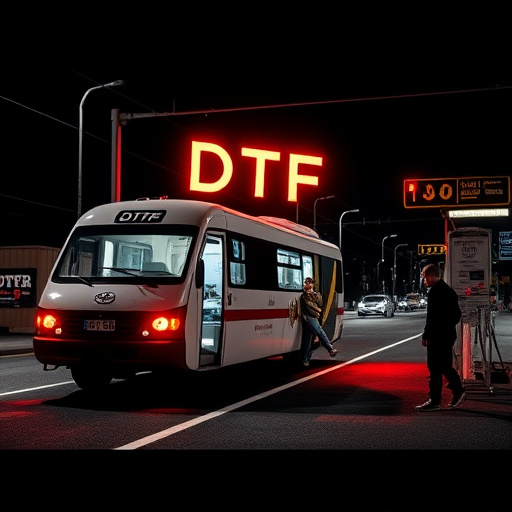
Direct-to-film (DTF) transfers require careful consideration during application to ensure optimal results. Techniques for securing these transfers to fabrics involve a precise process, often utilizing specialized equipment and binding agents. One common method involves using a heat press to apply the film, followed by the addition of a suitable adhesive or binding agent to create a strong bond with the fabric. The choice of agent depends on the type of fabric and desired finish; water-based adhesives are popular for their eco-friendly nature and ability to adhere to various materials.
Proper preparation of both the fabric and film is key. This includes cleaning and pre-treating fabrics to ensure adhesion, and ensuring the DTF film is accurately aligned during application. Skilled technicians may employ techniques like back-coating or laminating to enhance the transfer’s durability and prevent fading or peeling. These considerations collectively contribute to the longevity and aesthetic appeal of DTF transfers on various fabric types.
Choosing the Right Binding Agent for Your Fabric Project

When it comes to securing Direct-to-Film (DTF) transfers on fabrics, selecting the appropriate binding agent is a pivotal decision. The ideal choice ensures long-lasting durability and maintains the integrity of the transferred image. Factors like the fabric type, intended use, and desired aesthetic play a significant role in this selection process. For instance, a water-based binding agent might be suitable for soft, natural fabrics, offering a gentle bond without compromising breathability. Conversely, for heavy-duty applications or synthetic fabrics, a more robust, solvent-based adhesive could provide superior strength and resistance to fading or peeling over time.
Understanding the characteristics of your fabric and the expected lifespan of the DTF transfer is key. If the fabric will be exposed to frequent handling or harsh environmental conditions, opt for a high-performance binding agent designed to withstand such stresses. Conversely, for decorative items or limited-use projects, a more cost-effective option could suffice. Researching and comparing different binding agents available in the market, considering user reviews, is essential to make an informed decision tailored to your specific fabric project requirements.


